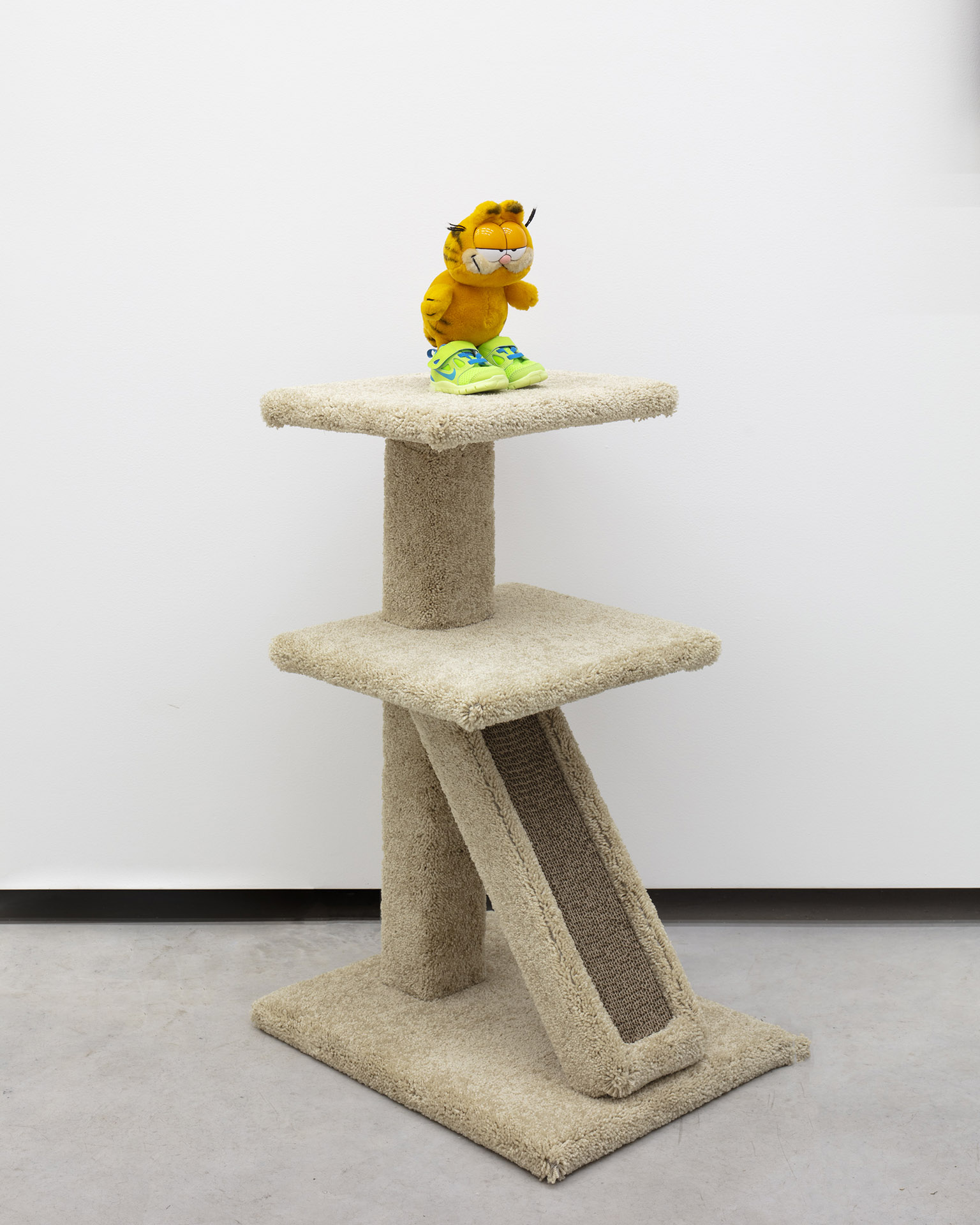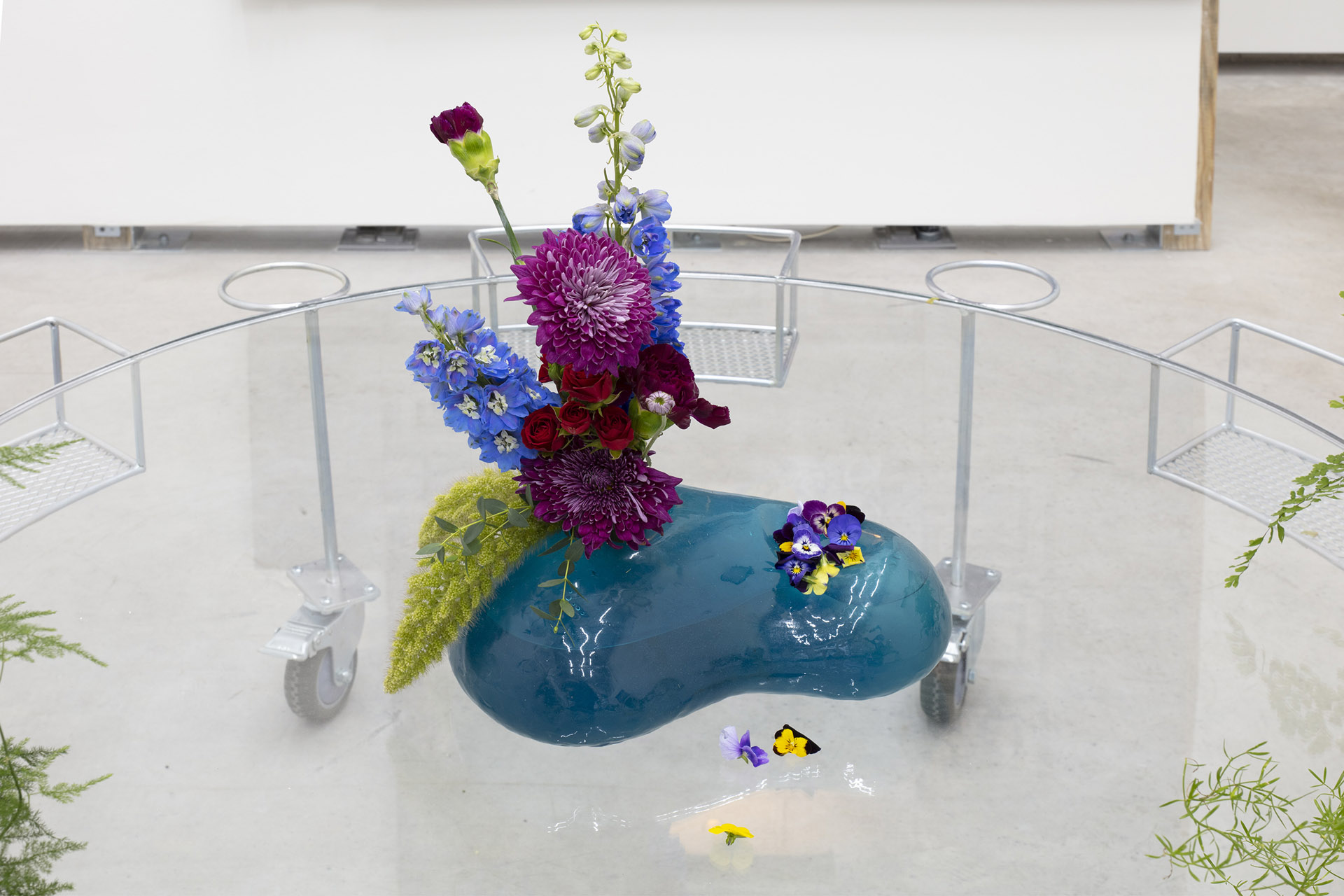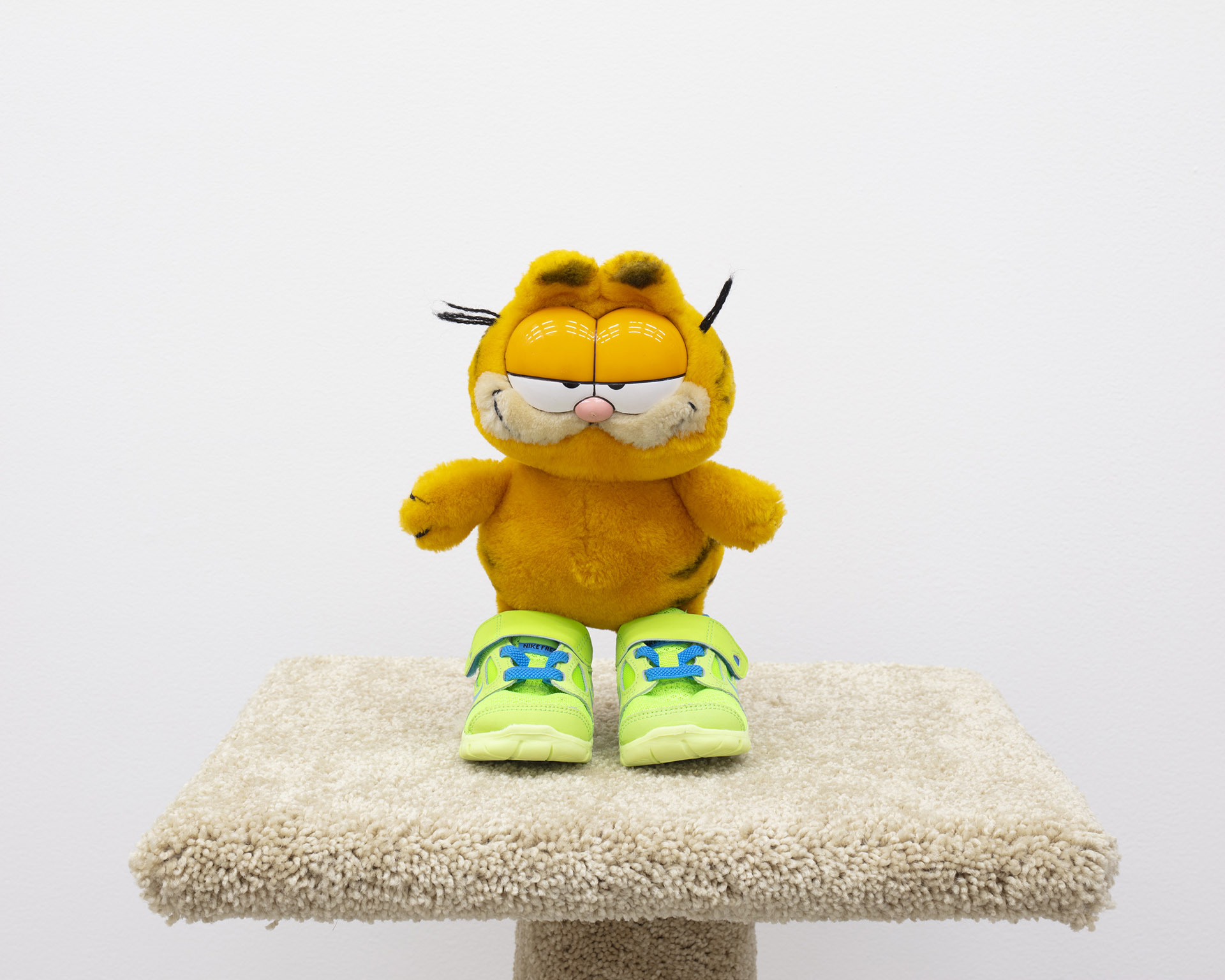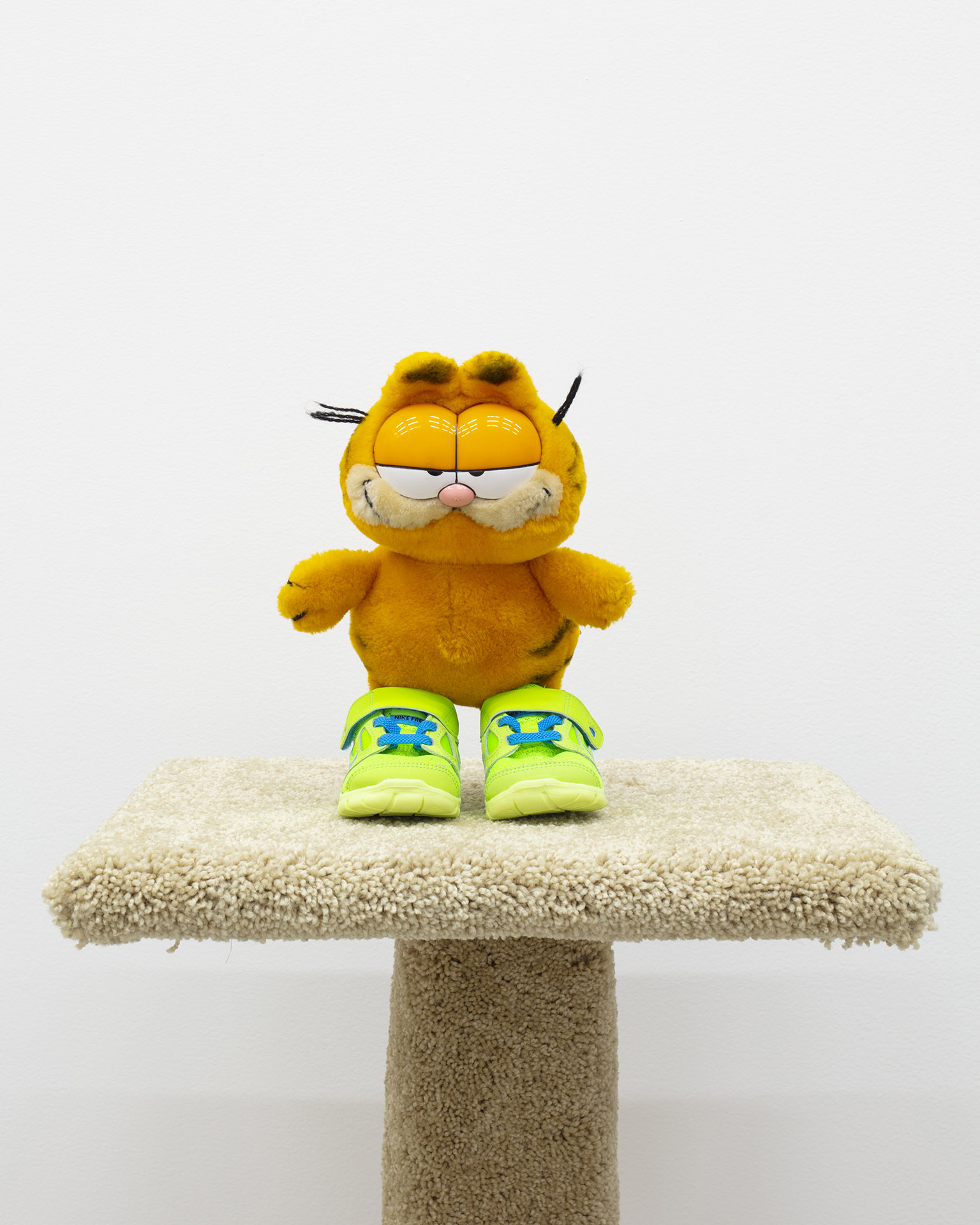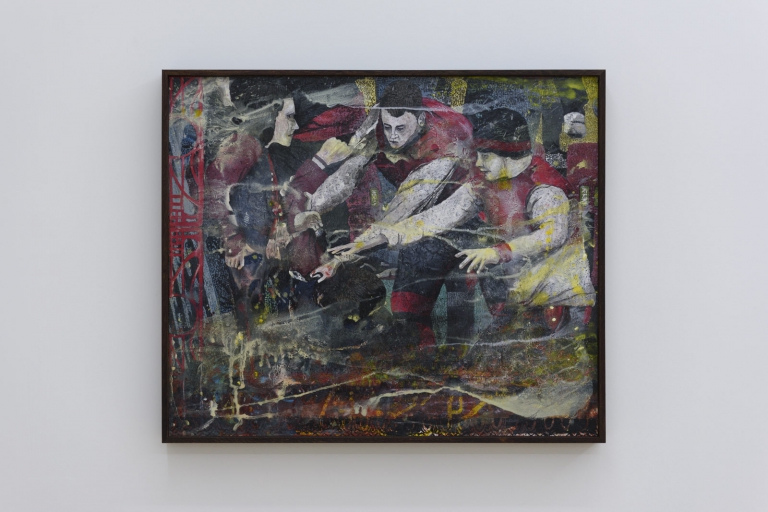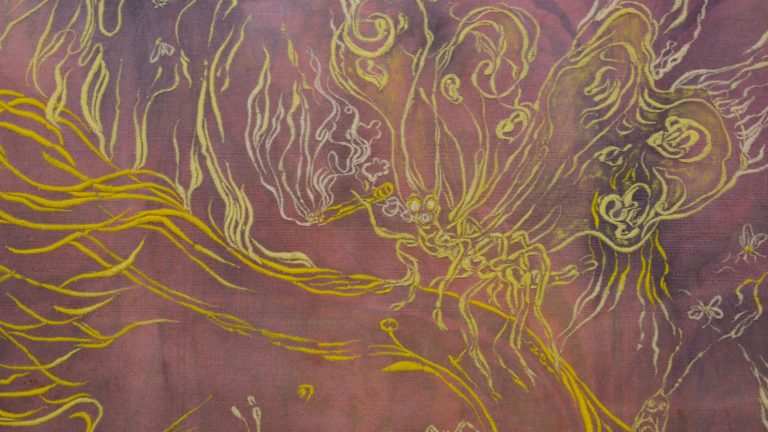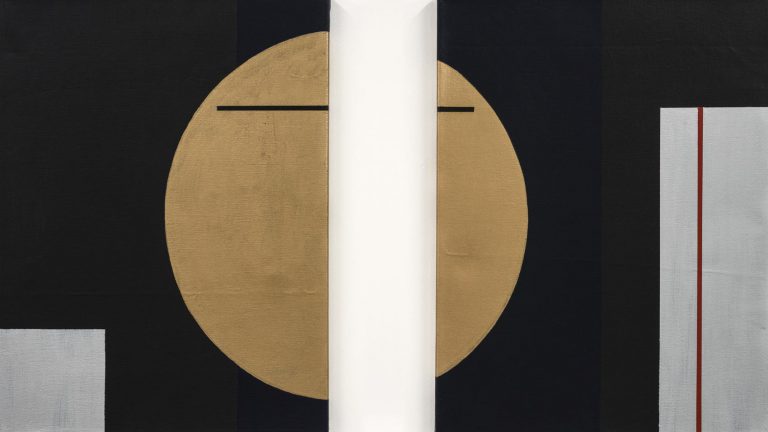Artists: Avantgardo, David Attwood, D.E.N.P, Luis F. Muñoz, Javier Fresneda, Shana Hoehn, Fabiana Martínez Pelaez, Karla Kaplun, Samuel Nicolle
Exhibition title: Sala-jardín-bar: I Believe in God, Only I Spell it Nature
Curated by: rivera
Venue: Lodos, Mexico City, Mexico
Date: July 17 – August 14, 2021
Photography: all images copyright and courtesy of the artists and Lodos, Mexico City
i am a little church(far from the frantic
world with its rapture and anguish)at peace with nature
–i do not worry if longer nights grow longest;
i am not sorry when silence becomes singing
winter by spring, i lift my diminutive spire to
merciful Him Whose only now is forever:
standing erect in the deathless truth of His presence
(welcoming humbly His light and proudly His darkness)
e.e. cummings
feeling the vast fascination of space, the pair of eyes rose to ask: what is this that is the world. the where is as hypothetical as the construction of its history, even more than hypothetical, it is imaginary. there was, at some point, a principle that corresponded with the prevailing fervor to ask questions. Since that origin, the thread has been unraveling, leaving behind what we call culture, which is nothing other than the community vision of answering us, together, the same questions.
we are dazzled by the new times and their giant heap of confusions. and with that dazzling a strange conscious ignorance has arisen: we walk without apparent direction, oblivious to the question of the right distance between our bodies and the areas they inhabit. Faint in the face of nature, we perceive its effects far away, only noticing that they happen because they appear to flood our feeds. the curatorial exercise that rivera founded in the framework of the inauguration of the sala-jardín-bar, APRDELESP’s spatial project, is positioned right in front of this dispute over topological property. Through the construction of the space-object, the gaps of difference that exist between the places we inhabit, the objects that constitute them and the bodies that occupy them dissipate in order to combine within the same gap phenomenon.
it is difficult these days to pursue any concept that is not interstitial. the breaking points, which once allowed the elaboration of total systems of thought, have been centrifuged in the face of a polyhedral world that splits us. the approach is then partial and depends on the subjective figures that go through the experience. thinking about this multiple reality, the works included in I believe in God, only I spell it Nature serve as approaches to that genetic world that every body inhabits and that is interpreted from a logic of contact with different factions of the same founding study : the intrigue of space.
each one of the pieces invokes a partiality of its world, defined by its particular canons, opening a gap to the reasons that cross its meaning. From a first understanding, the domestic space is (re) figured against avantgardo’s kitsch treatment where aspiration and truncated luxury become a way of performativizing wealth in the projection of the mutability of his apartment; the voices of displaced taste also manifest the visual illusions with which Samuel Nicolle plays between ornament and fantasy, thus creating a contemporary appropriation of the still life transposed against the melodramatic imaginary of French cinema. the domestic flows towards the end of capitalist reason in the critique of radical productivity, symbolized in the garfield icon, thought by david atwood as a form of a new frontier for the ready-made.
the invocation of the theoretical-cultural space as a second path of exploration finds its home in the melting pot of concepts that are opened from the postcolonial, the decentralization of capital art and the image as a radical rhizomatic position. in karla kaplun the link between scenography and performance is mixed with those referring to organic architecture by frank lloyd wright in order to open the image to its possibilities of worship and banality. The symbolic bow of north american fordist modernity, moving towards the future, merges with the exploration of the female body in the sculptures of shana hoehn, and the fractals of the effects of that new north american colonial world move towards the night vision of caribbean slavery and the traffic of precious woods in javier fresneda’s sculpture of zapote and ziricote. in luis f. muñoz opens the possibilities of criticism through the lifting of new hegemonic categories (and their discreet farces) taken from the caves of the backpack of a hypothetical university student.
in the third instance, the always mysterious territory of the natural opens up in its relationship with the spatial, the constant question of the scientific mind to know what lies behind the fascinating effects of the always abject nature. fabiana martínez peláez’s research is disputed between the places of culture and their need to build ornament as a form of transgression to the imaginary assigned by natural evolution, symbolized in the technological process with which purple flowers are obtained. similarly, the attempt to domesticate the hirsute world of the wild is extrapolated in the joint work of the prime number studies department made up by wendy cabrera rubio and marek wolfryd, opening a dialogue between the fabric and the cabinet of curiosities to position itself as a new instance for criticizing the historical postulates of art (as well as its closest formulations within latin america) and the way in which representation has been shaped from colonialist visions that exploit the visibility of a certain partiality – exoticized from outside – of what constitutes us as a region.
the question that arises in front of the artist’s eyes is similar to the questioning that awakens the liminal fascination with the world. but it is now positioned as a where are we? drastic. the thought and architecture of our affections have constantly tried to solve the rigorous question. the answers strike and fail. only the exploration remains in order to reconcile ourselves with a full space where a chapel can be founded for the adoration of a god who is sometimes form, sometimes nature and sometimes –most– mystery.
-emilio a. valencia
A ‘space-object’ is not only a space or an object, but rather it constitutes itself in the defiant claim to both categories. It is not a space with objectual qualities, nor is it an object with spatial qualities. Neither does it find itself casually in the intersection of object and space, but is deeply committed to its existence as both space and object.
On Saturday, July 10, 2021, APRDELESP presented the first space-object in the world: the ‘sala-jardín-bar’ at Lodos.
Now, from July 17 to August 14, the gallery space, along with the elements arranged for the presentation of the sala-jardín-bar, will function as infrastructure for the exhibition I Believe in God, Only I Spell it Nature by the curatorial collective rivera. Subsequently, from August 21 to September 18, a project by curator Anna Goetz will be presented, and finally, from October 9 to November 6, a project by artist PJ Rountree.

